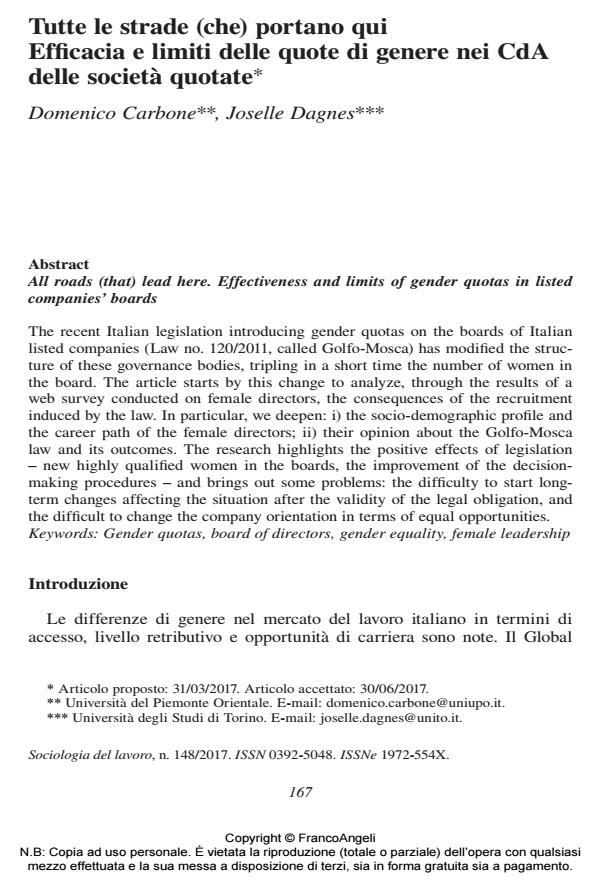All roads (that) lead here. Effectiveness and limits of gender quotas in listed companies’ boards
Journal title SOCIOLOGIA DEL LAVORO
Author/s Domenico Carbone, Joselle Dagnes
Publishing Year 2017 Issue 2017/148
Language Italian Pages 21 P. 167-187 File size 168 KB
DOI 10.3280/SL2017-148010
DOI is like a bar code for intellectual property: to have more infomation
click here
Below, you can see the article first page
If you want to buy this article in PDF format, you can do it, following the instructions to buy download credits

FrancoAngeli is member of Publishers International Linking Association, Inc (PILA), a not-for-profit association which run the CrossRef service enabling links to and from online scholarly content.
The recent Italian legislation introducing gender quotas on the boards of Italian listed companies (Law no. 120/2011, called Golfo-Mosca) has modified the structure of these governance bodies, tripling in a short time the number of women in the board. The article starts by this change to analyze, through the results of a web survey conducted on female directors, the consequences of the recruitment induced by the law. In particular, we deepen: i) the socio-demographic profile and the career path of the female directors; ii) their opinion about the Golfo-Mosca law and its outcomes. The research highlights the positive effects of legislation - new highly qualified women in the boards, the improvement of the decisionmaking procedures - and brings out some problems: the difficulty to start longterm changes affecting the situation after the validity of the legal obligation, and the difficult to change the company orientation in terms of equal opportunities.
Keywords: Gender quotas, board of directors, gender equality, female leadership
Domenico Carbone, Joselle Dagnes, Tutte le strade (che) portano qui Efficacia e limiti delle quote di genere nei CdA delle società quotate in "SOCIOLOGIA DEL LAVORO " 148/2017, pp 167-187, DOI: 10.3280/SL2017-148010